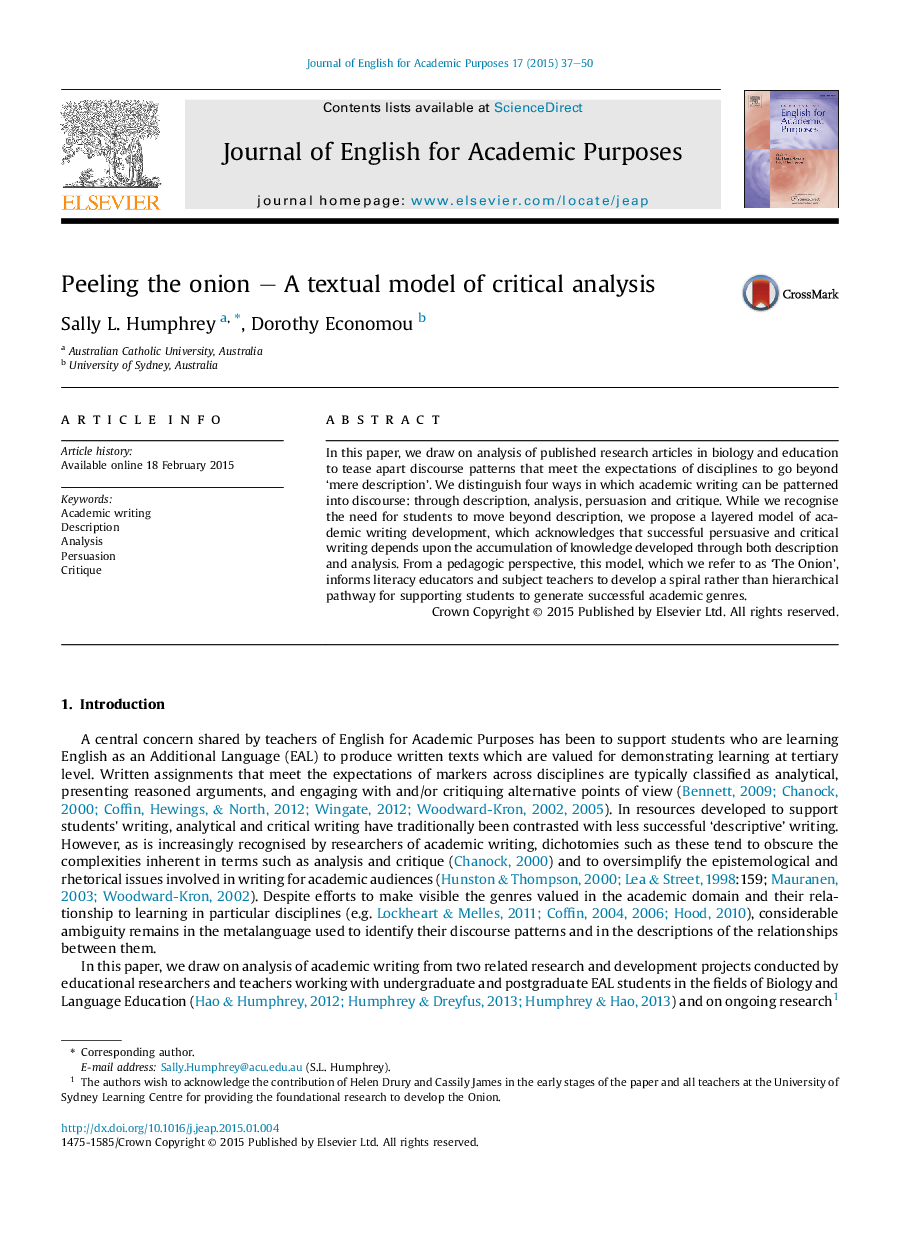| Article ID | Journal | Published Year | Pages | File Type |
|---|---|---|---|---|
| 360211 | Journal of English for Academic Purposes | 2015 | 14 Pages |
•Four discourse patterns of valued academic texts are characterised linguistically.•Motivated interactions of description, analysis, persuasion, critique are found.•Critical analysis is conceptualised as a layered ‘onion’, integrating these patterns.•Linguistic patterns of strategic description vary according to disciplinary function.•Spiral curriculum proposed to strategically revisit and integrate basic patterns.
In this paper, we draw on analysis of published research articles in biology and education to tease apart discourse patterns that meet the expectations of disciplines to go beyond ‘mere description’. We distinguish four ways in which academic writing can be patterned into discourse: through description, analysis, persuasion and critique. While we recognise the need for students to move beyond description, we propose a layered model of academic writing development, which acknowledges that successful persuasive and critical writing depends upon the accumulation of knowledge developed through both description and analysis. From a pedagogic perspective, this model, which we refer to as ‘The Onion’, informs literacy educators and subject teachers to develop a spiral rather than hierarchical pathway for supporting students to generate successful academic genres.
Graphical abstractFigure optionsDownload full-size imageDownload as PowerPoint slide
